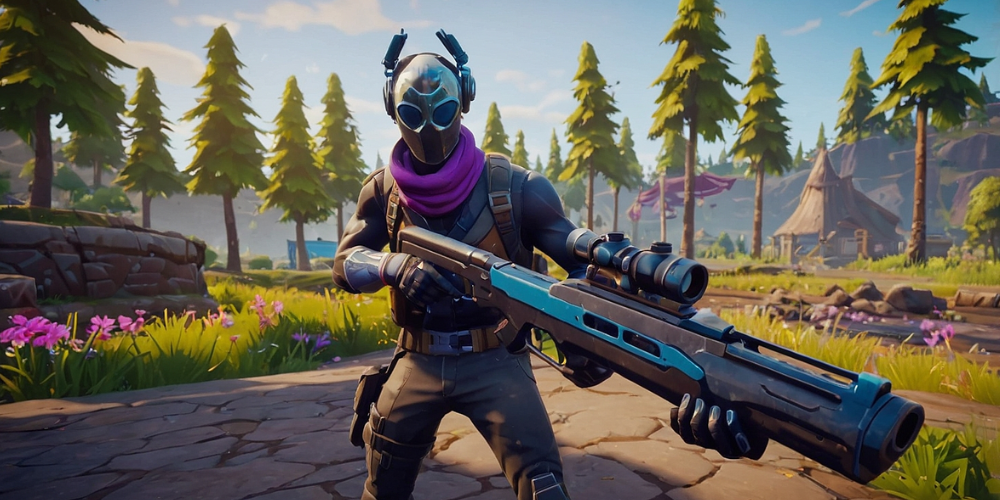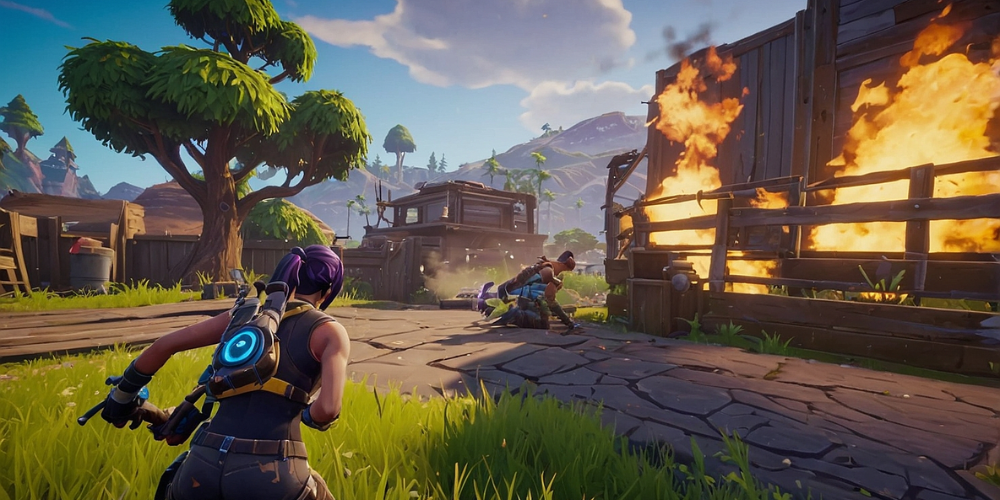Multiplayer Dynamics in Fortnite Mobile: Discuss the Challenges and Successes of Adapting Fortnite for Mobile Multiplayer Gameplay
- Oct 22, 2024
- 167

As a long-time player of Fortnite, the transition from console and PC to mobile sparked a mix of excitement and apprehension. How could such a fast-paced, graphically intensive game possibly work on a smartphone? I dove headfirst into the world of Fortnite Mobile, ready to embrace the challenges and enjoy the successes that came with adapting this beloved title for portable play.
First Impressions: The Interface Redesign
The first thing I noticed upon launching Fortnite Mobile was the redesigned user interface. The touch controls felt intuitive at first glance but required a different kind of skill than I was used to. The layout consisted of various virtual buttons for movement, building, and interactions. My thumbs danced across the screen as I familiarized myself with this new format, adjusting my gameplay to ensure that each maneuver was as fluid as possible.
Compounded Difficulty: Combining Touch Controls with Gameplay
The transition from traditional controllers to touch controls posed significant challenges. Aiming, building, and constructing quickly felt cumbersome, almost as if I were working with one less hand. Mastering the art of building was an uphill battle; pressing the right buttons in the heat of battle became an anxiety-inducing struggle. It pushed my adaptability to its limits, as I had to learn to prioritize speed and accuracy over the tactile feedback that physical controllers provided.

Frustrating Lag: The Reality of Mobile Connectivity
If there's one thing I quickly learned about Fortnite Mobile, it's how sensitive it is to internet connectivity. Experience issues such as lag, stutters, and even disconnections become commonplace. I often found myself in the middle of intense firefights, only to be wiped out due to a sudden connection drop. While I attempted to limit distractions and enhance my Wi-Fi signal, these hiccups became an inherent part of my mobile gaming experience.
Adapting Strategy: New Approaches to Combat
With a new platform came the need for a refreshed strategy. I found that certain tactics that worked well on a console or PC did not translate effectively on mobile. Rushing into a fast-paced battle was often a recipe for disaster, given the slower response times and occasional inaccuracies in touch controls. Instead, I embraced a more measured approach, favoring stealth and long-range engagements over close-quarters confrontations.

Building in a Mobile World: A New Challenge
Fortnite is known for its building mechanics, which are as crucial as shooting skills. However, constructing buildings using touch controls proved to be a monumental task. The rapid switching between building materials, the spatial awareness needed, and the placement of structures all became fraught with difficulty. I dedicated countless hours to practice, developing muscle memory for quick building in real-time scenarios. Embracing a slower build style over panicked placements became essential in honing my skills.
Community Interaction: A Different Kind of Connection
The mobile gaming landscape fosters a unique community experience. Engaging with fellow players felt more intimate, given the shared struggle of adapting to mobile controls. Whether it was in-game chat or social media platforms, I found camaraderie among other players. Learning from their experiences and sharing tips became a fundamental part of my growth within Fortnite Mobile.
Cross-Play Features: Bridging the Gap
One of the standout successes of Fortnite Mobile is its seamless cross-play capabilities. Friends on console or PC can join in on the same matches, ultimately bridging the divide between platforms. This feature allowed me to play with my friends regardless of their chosen devices, fostering an environment of shared excitement. However, it also introduced a challenge, as I often found myself up against players utilizing more robust hardware.

Performance Boost: Optimizing Gameplay
Fortnite Mobile is designed to perform well on a variety of devices, yet not all phones are created equal. I noticed a marked difference in experience based on the hardware I played on. Older phones struggled to maintain smooth graphics and frame rates, which often put me at a disadvantage. Investing in a device specifically equipped for gaming unlocked new possibilities. As I dabbled in different devices, the experience began to feel drastically different based on performance maximums.
Visuals on the Go: A Mixed Bag
The mobile graphics of Fortnite were both impressive and somewhat disappointing. Playing on a high-end device revealed the polished visuals, while using older models produced pixelated textures and lower frame rates. This inconsistency detracted from immersion and made it more challenging to read enemy movements and gauge distances accurately. Adapting to these visual limitations required a shift in how I assessed battles and utilized the environment.

Exclusive Events: Unique Additions to the Mobile Experience
Fortnite Mobile brought its own set of exclusive events that added an extra layer of engagement. These events often tapped into mobile-specific mechanics or storytelling strategies that intrigued me as a player. The constant updates kept the game fresh, ensuring that I remained excited about logging in to see what new surprises awaited me in my pocket-sized battlefield.
In-Game Purchases and Currency: A Different Economy
Fortnite is notorious for its vibrant skins and cosmetic items, and Mobile is no different. However, managing in-game purchases on a mobile device prompted some unique considerations. The ease of buying items at my fingertips often led to impulse buys. I learned to control my spending habits, prioritizing wishes over needs as I navigated the virtual economy. This financial aspect added a layer of strategy as I weighed my options with each seasonal update.
Learning Curve: Embracing the Journey
Playing Fortnite Mobile presented a steep learning curve, but with it came immense growth in my gaming abilities. It showed me that every setback and challenge was an avenue for improvement. Each match presented new experiences and lessons, ultimately honing my skills over time. I began to see noticeable differences in my gameplay, as precision and building speed improved with ongoing practice.

Social Media and Streaming: Sharing the Mobile Experience
The rise of mobile gaming led to new trends in social media and streaming platforms. As I engaged with content creators who focused on Fortnite Mobile, I discovered strategies, tips, and gameplay techniques that significantly enhanced my understanding of the game. The community’s enthusiasm ignited a desire within me to share my own gameplay and connect with others through streaming, creating a different layer of enjoyment beyond simply playing the game.
Accessibility and Inclusivity: Reaching a Wider Audience
One of the considerable successes of Fortnite Mobile is its ability to reach a diverse and broader audience. The accessibility of mobile games allows players from various backgrounds and gaming abilities to partake in the Fortnite experience. This inclusivity has forged new friendships among players who may not have been able to engage with the game otherwise. It is inspiring to witness how mobile gameplay has transcended barriers and connected people around the world.
Future Prospects: The Ongoing Evolution of Fortnite Mobile
As I continue my journey within Fortnite Mobile, I remain excited about the prospect of future developments and enhancements. The game continuously adapts to fulfill the demands and hopes of its community of players. I'm curious to see how developers will address the challenges and explore innovative features to take mobile gameplay to the next level, ensuring that it thrives as part of the larger universe of Fortnite.